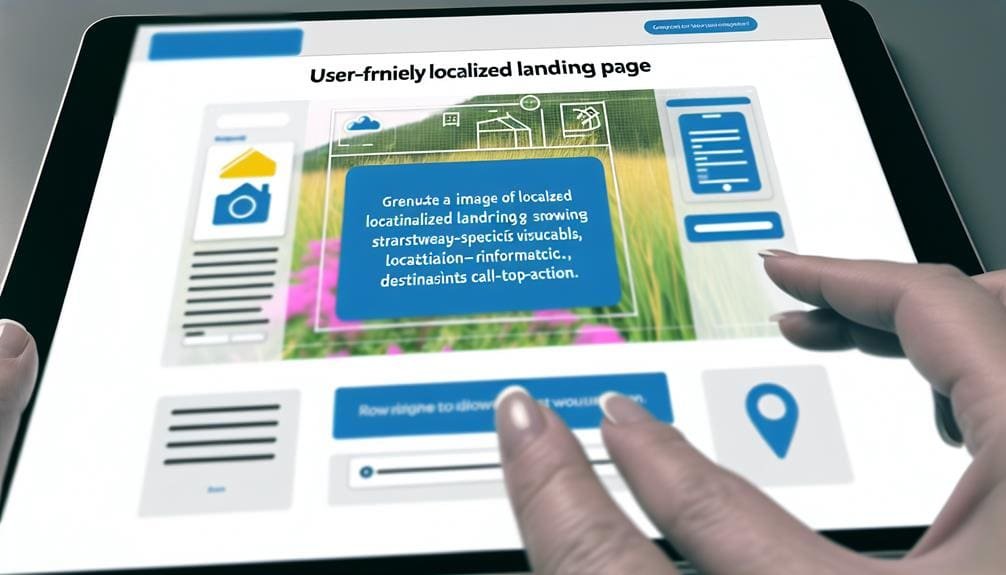3 Best Strategies for Geo-Targeted Page Analytics
March 17, 2024 | by Jacob Cavazos

As we sift through the digital landscape, imagine each user's location as a piece of a larger puzzle, one that, when correctly assembled, reveals the intricate picture of our audience's geographical behaviors. We've pinpointed three best strategies for geo-targeted page analytics that are proven to enhance our understanding of user engagement and drive our digital marketing campaigns with precision. Firstly, we harness the power of location-specific insights, enabling us to tailor our content and offerings to match local preferences and demands. Secondly, we implement geo-segmented reporting, which slices through the clutter of aggregated data to provide us with crystal-clear regional performance metrics. Thirdly, we optimize for local engagement, adjusting our strategies to resonate with regional sensibilities and trends. These approaches not only afford us the clarity to make informed decisions but also the agility to adapt to the ever-evolving digital terrain. Stay tuned as we unpack these strategies further, equipping ourselves with the knowledge to navigate the geo-targeting domain with confidence and finesse.
Utilize Location-Specific Insights
Leveraging location-specific insights allows us to strategically target areas such as stadiums and universities, tailoring our marketing campaigns to resonate with distinct consumer groups effectively. By harnessing the power of geotargeting through location data, we're able to pinpoint our target locations and optimize Marketing Performance with precision. This approach not only sharpens local SEO efforts but also enhances conversion rates by speaking directly to the needs and behaviors of regional audiences.
We also exercise the option to exclude locations where ad rates are prohibitively high. This ensures our campaigns remain cost-effective, avoiding unnecessary expenditure on areas unlikely to yield an adequate return on investment. Bars and clubs, for example, can benefit from this technique by focusing their marketing dollars where they matter most.
By setting a radius with geo-fencing or employing geo-conquesting tactics, we can target consumers near competitor locations, thereby amplifying ad exposure. Location options in Google Analytics guide us to adjust ad bids, prioritizing areas that maximize visibility and balance cost.
Furthermore, incorporating location-specific keywords into our paid search ads bolsters local search presence. As a result, our ads gain heightened relevance and visibility, directly impacting the bottom line.
Implement Geo-Segmented Reporting

Building on the insights gained from location-specific targeting, we now employ geo-segmented reporting to dissect our data further and refine our marketing strategies. By analyzing the performance of our campaigns in relation to geographic location, we're able to identify which areas yield the most beneficial local results. This granularity allows us to pivot our geo-targeting strategy swiftly, capitalizing on successful local searches and optimizing our ad spend.
We've tailored our marketing strategy to include location-specific keywords, enhancing our visibility where it counts. For instance, using area codes and local landmarks in our paid search ads significantly boosts the relevance of our ads to our target audience. This specificity is crucial; it ensures that our message resonates with consumers whose search queries show intent.
Moreover, we adjust our bids based on the performance data from geo-segmented reporting. By raising bids in high-performing areas and lowering them where the response is lukewarm, we strike a balance between cost and reach.
In essence, geo-segmented reporting serves as the backbone of our geotargeting strategy. It's the compass guiding our campaign targeting, ensuring that every marketing dollar is an investment towards reaching the right audience, at the right place, and at the right time.
Optimize for Local Engagement

To optimize local engagement, we're honing in on specific venues and tailoring our marketing to engage distinct consumer demographics more effectively. By focusing on stadiums, airports, and other local businesses, we're not just reaching our target market; we're delivering messages that resonate. Geo-targeting can help us adjust our content marketing strategy to include location search terms and local jargon, enhancing our Search Engine Optimization efforts.
Here's how we're actioning these strategies:
| Strategy | Action Steps |
|---|---|
| Identify Target Venues | Focus on areas like universities and malls. |
| Define Exclusion Areas | Exclude non-essential locations to optimize ad spend. |
| Utilize Geo-Fencing | Set a radius for ads around high-interest locations. |
| Location-Specific Keywords | Incorporate neighborhood names and landmarks in content. |
By defining exclusion areas, we're avoiding unnecessary ad spend in locations that fall outside of our strategic interest. Furthermore, using geo-fencing, we're not only reaching consumers within a specific radius, but also outmaneuvering competitors by targeting customers around their locations.
Optimizing bids based on visitors' location ensures we're prominent where it counts, but still efficient with our budget. Our mastery of local engagement translates into actionable insights that drive traffic to your local business and ensure your message is heard loud and clear by those who matter most.
Frequently Asked Questions
What Is Geo Targeting Techniques?
We leverage geo-targeting techniques to enhance market segmentation, utilizing demographic analysis and behavioral insights for effective location targeting, cultural personalization, and language optimization, while adapting to regional trends, climate, legal compliance, and holiday targeting.
Which of the Following Are Ways to Use Geotargeting to Increase Conversions?
We're boosting conversions by leveraging location personalization, culture tailoring, and localized content. Seasonal promotions, regional trends, and language optimization, alongside weather-based advertising and event triggering, fortify our approach. We're mastering demographic segmentation through local partnerships.
How Should You Configure Your Geographic Targeting?
We'll configure our geographic targeting by analyzing user behavior, market potential, and regional trends. We'll focus on location segmentation, cultural customization, seasonal campaigns, and language personalization, considering local regulations and ensuring mobile optimization with custom analytics.
What Is the Proper Format for Geo Targeting a Location in a Feed?
We're streamlining our feed through precise location tagging, integrating country codes, regional identifiers, and language preferences to align with cultural nuances. Localized content and time zone adjustments ensure optimal audience segmentation and delivery timing.
RELATED POSTS
View all



